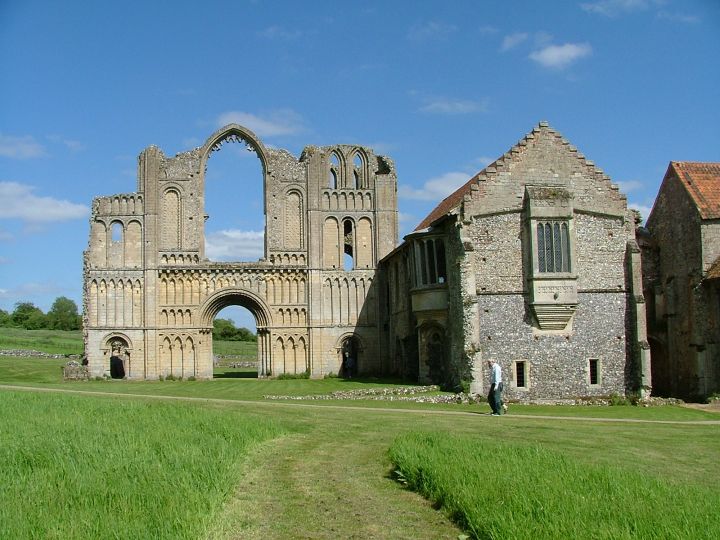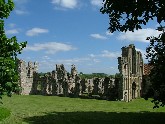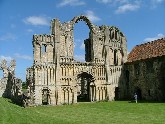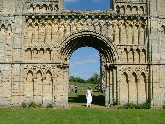
home I index I introductions I e-mail I about this site
Priory church of St Mary, Castle Acre

Read
the captions by hovering over the images, and click on them to
see them enlarged.



Priory
church of St Mary, Castle Acre
Considering that the Priory was never intended to be home to more than 30 monks, the church is massive, and easily readable from what remains. The vast west front is the most familiar aspect, dating from the 1160s, although the massive window punched into the top is from perhaps a century later. The two western towers must have been massive judging by what survives of the southern one. The church is cruciform, with two large chapels flanking the long chancel. Presumably one was dedicated to the Blessed Virgin, but that on the north side may have held the priory's most famous relic, the arm of St Philip. The glory of Castle Acre is not so much the church (though it is breathtaking) but that so many of the other conventual buildings survive, often in recognisable form, sometimes up to two stories high. These include the almost complete Prior's House, which has its own chapel. This isn't the place for a tour of the whole site, but there are photographs of some of the other buildings below. In 1373, the Priory was removed from the influence of Cluny along with other such 'alien' priories, and this might have guaranteed the survival of the priory church in parochial form had it not been for the fact that the Surreys built the massive church of St James halfway between the castle and the priory. Along with the other monasteries of England and Wales, Castle Acre had all its lands and possessions stolen by the crown in the 1530s and squandered on pointless wars with France. Thomas Howard, Duke of Norfolk was granted possession. It then passed through the hands of several landed families, its assets being stripped along the way, until Edward Coke of Holkham Hall bought it and added it to the vast estates that his agricultural revolution would bring to the fore. The Cokes, or the Earls of Leicester as they became, still own the Priory, but it has been in the care of the State since 1927. Simon Knott, May 2005 |
home I index I latest I introductions I e-mail I about this site I glossary
links I small
print I www.simonknott.co.uk I www.suffolkchurches.co.uk
ruined churches I desktop backgrounds I round tower churches